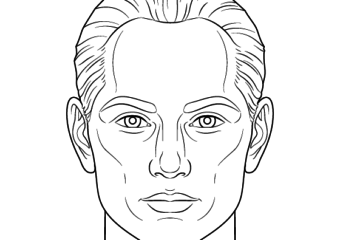How to Draw a Realistic Banana Tutorial
This beginner friendly tutorial shows how to draw and shade a realistic looking banana in several steps with illustrated examples provided for each.

A banana can be a fairly easy object to draw. Bananas tend to have simple shapes and clearly defined sides making them a great item for practicing shading.
Step 1 – Draw the Outline Shape of the Banana

For this step simply draw the outline shape of the banana.
Step 2 – Define Each Side

Draw lines that define the different sides of the banana and as well as the smaller details of its shape.
Step 3 – Analyze the Lighting

As mentioned bananas as the one in this example have clearly defined sides making them great for practicing shading. In this particular example the light is coming from the upper right area of the drawing.
This means that the main shading will be as follows:
- Largest dark shading area – bottom of banana
- Largest medium shading area – middle of banana
- Largest light shading area – top of banana
Also please keep in mind that the tip of the banana will be the overall darkest part of the banana simply due to its color.
Step 4 – Apply Shading

For shading the banana you can use a cross hatch or one directional strokes. Try applying the strokes in slightly different directions to further reinforce the 3d shape of the banana.
For a tutorial on different types of strokes and shading techniques you can see:
Shading Techniques and Stroke Types Drawing Tutorial
Gradients
Another thing to be aware of is that the shading will also have gradients. The absolute brightest area of the banana will be on the top right side. As the shape of the banana curves slightly away from the light it will become darker.
Reflected Light

There will also be some light reflected from the surface the banana is sitting on.
In this example the reflection light will lightly illuminate the area around both the tip and end of the banana.
Darkest Shading Area
The darkest shading area will be the middle area of the bottom side of the banana as the area faces the farthest away from he main light source and the reflection.
Shadow
For the shadow you can blend your strokes to the point where they are almost invisible. Make a smooth gradient transitioning from dark to light as the shadow moves away from the banana.
Conclusion
Drawing and shading a banana is a great way to practice if you are a beginner artist. If you like this tutorial and would like to try some more like it you can check out:
- Egg Step by Step Basic Shading Tutorial
- How to Draw a Realistic Pear Tutorial
- How to Draw a Croissant Step by Step
- How to Draw a Cake Slice in 10 Steps









